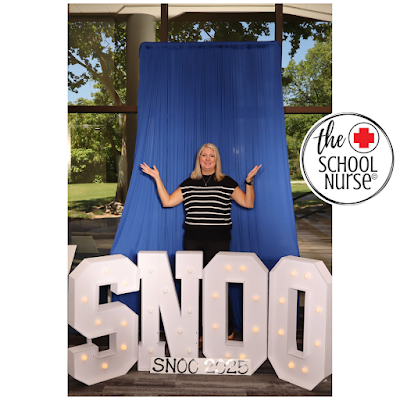Rooted in Care: My First-Ever Keynote at the School Nurse Organization of Oklahoma Summit
Earlier this month, I had the incredible honor of serving as the very first keynote speaker at the 55th Annual School Nurse Organization of Oklahoma (SNOO) Summit- a milestone for the organization and for me personally.
It was my first keynote. My first time speaking to a statewide group of school nurses! And the first time I stood at a podium feeling both nervous and exactly where I was meant to be.
From the Heart: “Rooted in Care”
The title of my talk was “Rooted in Care: Stories That Shape Our Practice”. Though, a better title might’ve been “Rooted in Care: Practices That Shape Our Stories”… but I had already submitted my slides, so we just rolled with it!Either way, both versions captured what I shared: that the seemingly ordinary practices we return to again and again- routines, boundaries, data, and collaboration- are actually powerful tools that shape our impact and support our growth.
Whether it’s setting up a reliable health screening schedule, honoring your own lunch break (yes, really!), collecting data to advocate for more support, or building strong partnerships- we’re not just “getting through the day.”
We’re laying the foundation for long-term success- growing roots of steadiness, sustainability, credibility, & connection that both us grounded and push us to grow as school nurses!
The Energy in the Room
There’s something truly energizing about being surrounded by other school nurses. We speak the same language. We understand each other. We laugh at the same memes. And we all know what it's like to juggle a dozen priorities before 10 a.m.
The Oklahoma school nurses welcomed me so warmly, and I left the Summit with a full heart and deep appreciation for the work we all do- often unseen, sometimes misunderstood, but always important.
Even as the speaker, I found myself learning and growing through hallway conversations, breakout sessions, and moments of shared experience that reminded me: we are not alone in this work.
Personal Growth in a Professional Moment
This keynote wasn't just about sharing my message- it was a moment of personal growth. It challenged me to reflect, organize my thoughts, and speak to an audience of peers who understand this work from the inside out.I left Oklahoma feeling more confident, more connected, and more convinced than ever that school nurses need each other! Our voices matter. Our stories matter. And the steady work we do every day? That matters too and it’s what makes a difference.
If you’re looking for a space to reflect, recharge, or talk through the real-life challenges of this role, I’d love to connect! You can schedule a free 15-minute Monday Mentoring Meeting or learn more about my individualized mentorship option designed specifically for school nurses- because we’re better when we grow together.
Thank You, SNOO!
A special THANK YOU to Brandi! 💛 Without your kindness and belief in me, I wouldn’t have had this incredible opportunity. Brandi- there aren’t enough calf fries in the world to thank you for everything!!
I truly hope we get to do it again someday.
~ Elisabeth
“Delivering my keynote at the 55th Annual SNOO Summit- what an unforgettable experience!”
 |

.png)




.png)


.png)
.png)





.png)
.png)


.png)









.png)
.png)


.png)

.png)

.png)














.png)

.png)